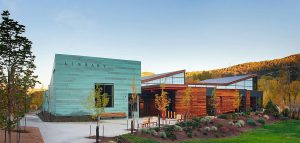Elizabeth Milias: The tax man cometh, but where does the money go?
The Red Ant

The first half of your Pitkin County property taxes are due tomorrow. For years, like many of you, I’ve simply paid them. It’s not exactly like paying a credit card bill where a thorough review is warranted in case of fraudulent expenditures or other debatable charges. Property taxes are what they are; it’s just the cost of living here, and besides, comparatively speaking, we’re far better off than many places.
While I rarely give my local property taxes more than a cursory glance, this time I peeled back a few layers of the onion. In short, Pitkin County’s portion of our property taxes is based on $3.4 trillion in assessed property value, the City of Aspen’s draw is based on $1.8 trillion, and then there are a bunch of “special taxing districts” which affect various jurisdictions within the county that are based on smaller, area-specific property valuations and/or bond levies. Depending on where you live, the taxing districts that you are billed for will vary.
The amounts we are billed for each taxing district are determined by what are called “mill levies,” the tax rate applied to the assessed value of your property to raise revenue to cover annual expenses. While a little wonky, it is telling to look at the various mill levies as they actually say a lot about our local priorities. And in many cases, it’s not what you’d expect or what necessarily makes sense.
Where I live in Aspen, my net mill levy is 36.025, 68% of which goes to just five “big ticket” entities: the Aspen School District (8.84), City of Aspen (5.093), Colorado Mountain College (4.013), Pitkin County Open Space and Trails (3.750) and RFTA (2.650). Add in Aspen Fire Protection District (2.638), Pitkin County’s General Fund (2.422), Aspen Valley Hospital (2.297) and the Pitkin County Library (1.436) and there’s 92% allocated. The remaining 8% is divided unequally among, in declining order, the Healthy Community Fund, Colorado River Water Conservation District, Aspen Ambulance District, Aspen Historic Park & Rec District, the County TV/FM Translator, County Road and Bridge, Aspen Sanitation District and, with the lowest of all the mill levies, Pitkin County Human Services.
I’ve lived here for a long time and, until I looked them up, couldn’t tell you much about several of these entities, and even less about why some of them get so few or so many of our property tax dollars. From the gross property tax haul of just over $146 million, the City of Aspen gets $9.3 million this year, while the County and its special taxing districts (Road and Bridge, TV/FM Translator, Human Services, Healthy Community Fund, Open Space and Trails, Pitkin County Library, and Aspen Ambulance District, among others) get $32.2 million. The remaining independent taxing districts get their mill levy-determined contributions from the property taxes collected, but in many cases (such as RFTA, Aspen Valley Hospital and the Historic Park and Rec District), these contributions make up only a portion of their budgets.
It’s strange. Why does Open Space and Trails (OST), arguably important given its mission to acquire, preserve, maintain and manage open space properties and trails for recreation, wildlife, agriculture, scenic and access purposes, get $12.8 million this year while Road and Bridge only gets $605K? We all see the community responsibility of providing $28.3 million to our local school district and another $9 million to RFTA, but curiously, did you realize that Colorado Mountain College (CMC) gets $13.7 million? I mean, I’m all for classes in computer labs, “smart rooms” whatever those are, a science lab, fitness studio, gallery and art studios, but when the Aspen Ambulance District, with 32 dedicated EMS staff who provide 24-hour pre-hospital emergency medical care and response to medical emergencies, gets just $1.4 million, things seem more than just a little out of whack.
These are trying times. When Pitkin County Human Services, a.k.a. “Public Welfare” (their words, not mine) and the Healthy Community Fund receive $222K and $3.3 million, respectively, toward their vital missions of maintaining a vibrant, safe and healthy community by providing grants and a stable funding source for local public and nonprofit programs, and this is less than what the Pitkin County Library receives ($4.6 million), maybe I’m not the only one who should question these allocations. Don’t get me wrong, I love the Library. This example is just to illustrate where we prioritize vital senior services, veteran services, youth and family services, child protection services, programs for at-risk youth, care for victims of domestic violence and sexual assault, care for the terminally ill and their families, mental health and substance abuse programs and prevention services, and health services for low income citizens, disabled citizens and their families. Just saying.
Making changes to mill levies is by no means an easy undertaking, but we can certainly do better. Many current candidates for city council have prioritized mental health services in their platforms. I hope they are aware of how low a fiscal priority this currently is. With these revelations, it’s time to let our city and county officials know that we are looking hard at our property tax dollars and know where they are going.
Our local governments have an embarrassment of riches. Especially in the post-COVID recovery period, it’s important to identify and highlight the beneficiaries of our property tax revenue. Contact TheRedAntEM@comcast.net




